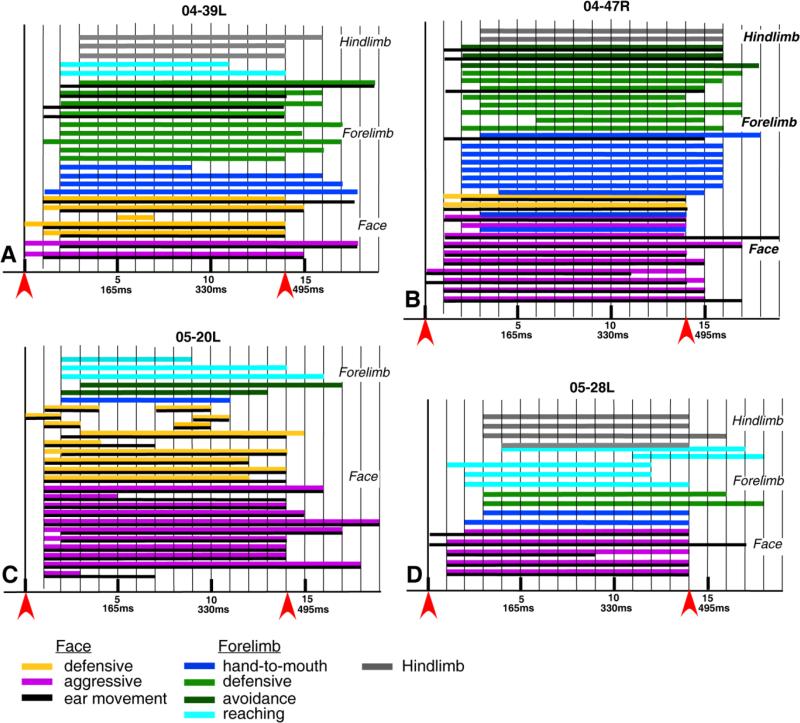Figure 7.
A–D: Durations of face, forelimb, and hindlimb movements evoked from PPC in four cases. Face movements started the earliest, and hindlimb movements started the latest. Most of the movements start within 33–67 msec after stimulus train onset and end at the end of stimulation. The red arrowheads mark the onset (left) and offset (right) of the 500-msec stimulation train. The vertical lines separate the 33.3-msec video frames. The colored horizontal lines indicate the types of movement for each case and the duration of that movement. If any movement occurred within a video frame, the bar extends through the whole frame. A moment that was detected in the frame is attributed to the start of the frame, although it could have started later in the frame. Likewise, the movement in the last frame is extended through the complete frame, although it could have ended within the frame. Thus, the precision of the response measures is limited by the frame rate. Color code is the same as in Figures 2–6.

